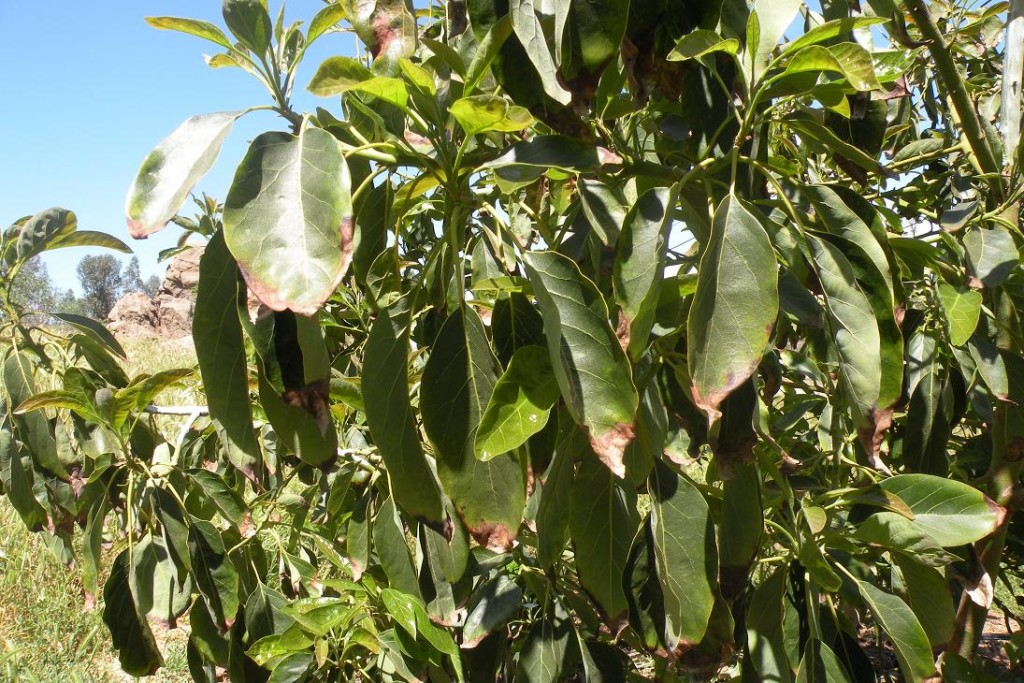Looks like the rain’s over. April is around the corner, and if we get anything more it’s likely to be only showers. Still, I’m starting the dry season — the season of irrigation — with a full tank of 500 gallons of collected rain. Now the question is who should be so lucky to receive the clear gold?
Compared to our irrigation water, all plants prefer rain. But avocados need it. They are highly sensitive to some of the salts in irrigation water, such as sodium and chloride. These salts are practically non-existent in rain. Over the course of the dry season, from May through October, the root zone of an avocado tree will accumulate these salts and their concentration eventually prevents the roots from taking up water properly.
Winter rains can wash the accumulated salts down below the level of the avocado roots. But in these drought years that hasn’t been happening as usual. I see a lot of trees around with exceptionally burnt canopies.
This is how the accumulation of salts manifests: burnt brown tips of leaves. The tips of the leaves is where the tree has collected the salts that it has taken up from the irrigation water in the soil. Leaves with tip burn don’t perform their job of photosynthesis as well, and the tree will shed them earlier than healthy leaves. This means the tree has to grow new leaves to replace the damaged, shed ones, and has less energy left over to produce fruit.
This all goes to say that I’ve decided to give my 500 gallons of collected rain to avocados, specifically a pair of young avocado trees of the Reed and Lamb varieties. I expect that at the end of the summer they’ll have healthier canopies than my other avocado trees. They should have zero tip burn.
Although 500 gallons won’t satisfy the thirst of these two trees all the way until rains start again in the fall, it should last nearly that long. Using the historical evapotranspiration (ET) rate for my area, April through October adds up to 40.6 inches. If avocado trees use 75% of the ET rate (when applying water that is low in salinity like rain), which is my best estimate based on expert sources, then they’ll use 30.45 inches during that period. My 500 gallons of rain is equivalent to 31 inches under the canopies of the two trees. Consistent rains usually arrive sometime in November or December so we’ll likely almost bridge the gap between now and then.
Looking forward to seeing the difference between the trees fed irrigation water and the trees fed rainwater.





is there any issue with the water growing bacteria or fungus while stored for that long? and do you add any chemicals or other additives to the water while its stored?